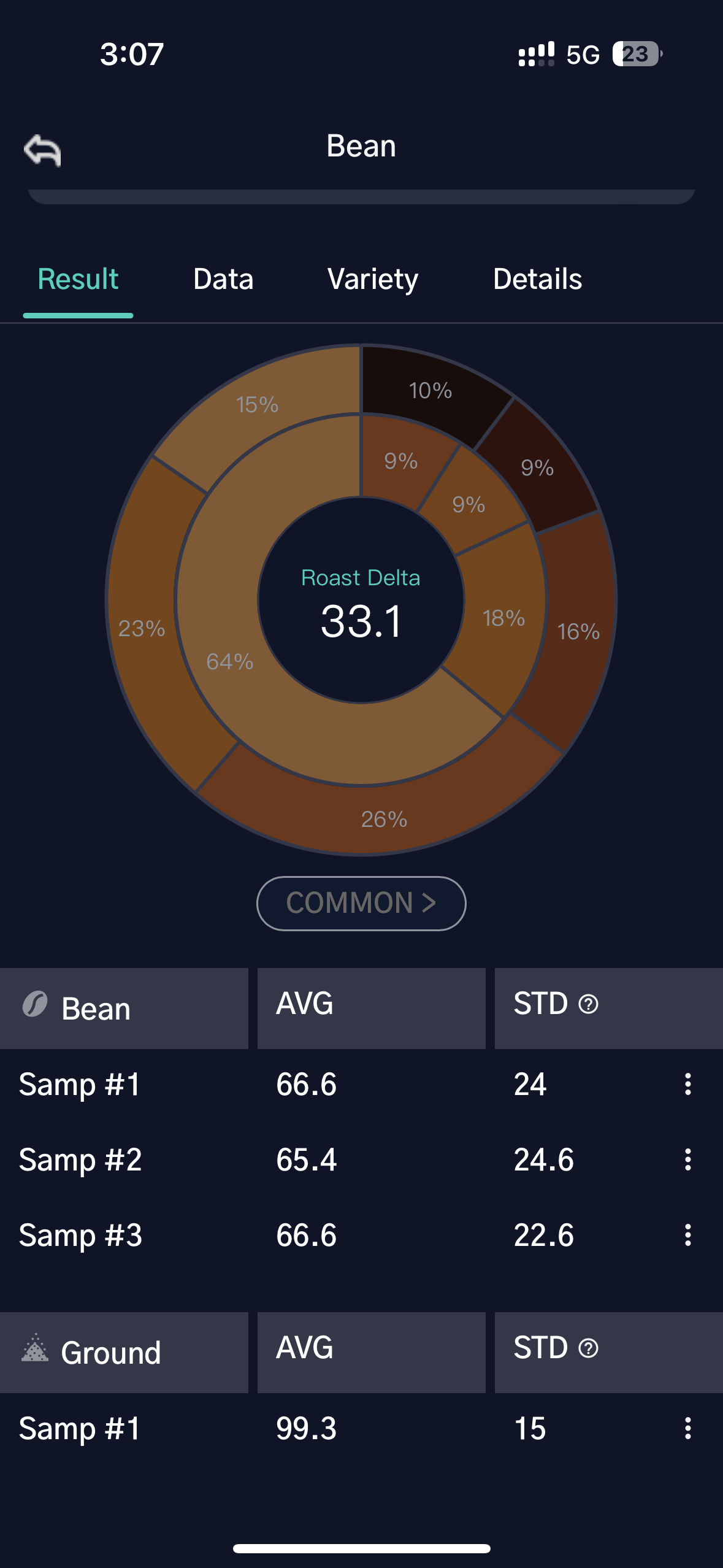Color Measurement: Best Practices
Given that coffee color is the best predictor of flavor, color measurement is a useful tool in roasting quality control. There are many color meters on the market with similar utility. I don’t have a strong preference for a particular color meter, but would like to offer a short guide to ensuring accurate color measurement.
When purchasing a color meter, there are a few considerations:
How consistent and accurate is the device?
How easy is it to use?
What is the cost?
What amount of ground coffee is required for a ground-color measurement?
Sample tray size
I think the last factor is the most underappreciated: some devices require upwards of 100g to take a color measurement. While a larger dose can provide more surface area, which offers more stable and representative measurements, it also wastes a lot of coffee. A roastery measuring 100 batches per week, at 100g per sample, at an average cost of $10/kg (roasted) coffee would spend approximately $5,000 per year taking ground color measurements! The same roastery using a color reader that requires 5g per sample would spend $250 per year on ground-coffee measurement.
Most people in the market for a color reader fixate on trying to save a few hundred dollars when purchasing a color meter, but don’t factor in that purchasing one meter vs another may cost an extra $48,000 over the next ten years.
Of course, using a very small sample tray has a downside, which is that readings are more volatile. For example, we use a DiFluid Omni, which has a very small sample tray and requires about 5g per ground sample. One quaker can alter the color reading by a few points. In a larger tray such as that of the Agtron or ColorTrack, there will be less variability in the readings. We compensate for this variability by taking a few readings if the first reading is not what we expect it to be. Note: I don’t mean “our reading is out of our target range.” I mean “we expected the reading to be x based on the roasted weight loss, but the reading is x+4.”
Grinding
Grind size has a shocking impact on color measurement. For example, we have an EK with setting from 1–11. When we grind on #1, the color reading is ~25 points higher than when we grind on #5 (#1 is reasonable for espress, #5 is our cupping setting, and slightly finer than pourover). Not only is it important to always use the same setting, but I recommend having a small grinder with low retention dedicated to color readings. We use a Fellow Ode for our color measurements, and we never use the grinder for any other purpose. We do this because we want the burrs to dull as slowly as possible. If you use your cafe grinder for color readings, the color readings can easily drift 5–6 points within a year as the burrs get duller. I expect our Fellow Ode to offer consistent color results for the next 20 years at our current rate of use.
I recommend using a relatively fine grind and tamping the ground sample if possible. A coarser grind may cause larger chaff particles to float on top of the ground sample, making the result lighter. Tamping helps to create a smooth surface, which improves measurement accuracy.
Timing of color readings
I can’t say if there is a “best” amount of time between roasting and taking a color measurement, but for the sake of rapid feedback and workflow, we take color readings of every batch as soon as the beans leave the cooling tray. We want to know the weight loss and color of the previous batch before we reach first crack in the current batch while roasting, in case we need to make a change to our roast color.
Quaker sorting
Whether you sort quakers or not, it is important to standardize the proportion of quakers when measuring color. Variability in the number of quakers can impact color readings, since quakers tend to be much lighter in color than mature seeds. At Prodigal, Mark and I hand sort to an agreed-upon level that mimics the degree of sorting we expect our optical sorter will do for each coffee. That is not as difficult as it may sound, as we hand sort samples for cupping, and frequently communicate about, and compare, our perceptions about how much sorting we will do for each coffee.
Whole-bean color readings
I consider ground-coffee color readings more important than whole-bean readings, but we always measure both whole-bean and ground color. This is not only to take yet another measurement of our roasting consistency, but also to learn how to manipulate the spread between outer and inner roast color.
Whole-bean readings tend to be a little less reliable than ground readings. This is due to several factors, including the bean surfaces being rounded, variability in the number of beans oriented with their “cracks” facing the color meter lens, and variation in the amount of silverskin stuck to the outside of beans. Much like with ground-color measurement, if we are surprised by a reading, we will repeat it a few times.
Calibration
I don’t have enough experience with various color meters to say how often or why they go out of calibration. My recommendation is to recalibrate the color meter before each roast session, and to liberally recalibrate if multiple readings are out of the expected range.
Weight Loss
It is essential to precisely measure the weight loss of every batch. Not only is weight loss a great proxy for overall roast development, but weight loss readings complement color readings well. If, for example, our roasted weight loss for several batches of a given coffee is 11.0, 11.0, 11.0, 11.0, but the ground-color readings are 98, 100, 102, 104, there is almost certainly an error in the color measurements. This pattern may indicate that the quaker sorting was not consistent or that the color reader needs calibration. Likewise, if the color readings are 98, 99, 98, 99, but the weight losses are 11.0, 11.0, 11.9, 11.1, the third weight-loss reading is suspect. The problem may have been user error, something was touching the scale to influence the reading, or perhaps some beans were lost in the roasting process (this happened to me recently while sample roasting; I set the airflow too high, and sucked a few beans out of the roasting chamber and into the chaff drawer. I was confused by the weight-loss readings until I opened the chaff drawer and realized the problem. I consider taking both weight loss and color readings a form of checks and balances in roasting QC.
Difluid Omni and sample tray / Omni app data presentation of whole bean color / alternative data presentation for ground coffee color



